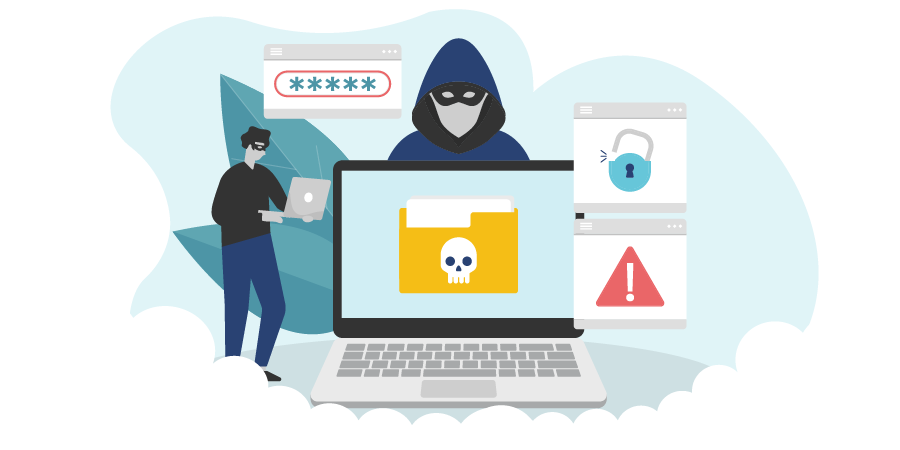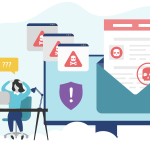Stay One Step Ahead: The Top Cybersecurity Mistakes Companies Make
July 15, 2025
In the fast-paced world of cybersecurity, threats evolve faster than many businesses can react. Companies are repeatedly caught off guard by breaches—not because hackers are overly skilled, but rather because fundamental online security is overlooked. More often, it’s the simplest things, like weak passwords, outdated software, or a missed update, that have the biggest impact. These basic missteps are easy to overlook, but that also means they’re easy to catch before they turn into costly disasters. To strengthen your organization’s cyber resilience, here are the top cyber breach mistakes business owners should avoid before an attack ever happens:

Disclaimer: Please note that the information provided herein offers guidelines only. It is not exhaustive and does not constitute legal, insurance, or cybersecurity advice. For more guidance, please consult a lawyer, a licensed insurance representative, and/or a cybersecurity specialist.
1. Delaying Software & System Updates
That “Remind Me Later” button might be more dangerous than you think. Outdated software often has known vulnerabilities that attackers can easily exploit. Keeping software up to date shouldn’t be optional; it’s essential to maintaining your system’s security.
Turn on automatic updates where possible and schedule regular check-ins to make sure everything is current. This includes operating systems, apps, plugins, and even hardware firmware.
2. Skipping Employee Security Awareness Training
Your employees are one of your greatest security assets…when they’re informed and prepared. Without the right training and awareness, even the most diligent team members can fall for phishing attempts or mishandle sensitive data.
Make training a priority; for example, set up regular training sessions or short video refreshers. Keep it simple, relevant, and consistent so staff can spot threats and know what to do. Make it industry-specific—cyber threats often look different in healthcare, finance, retail, or professional services.
RELATED: Security Awareness Training: What is it, Best Practices, & More
3. Relying on Basic Antivirus Alone
Antivirus software is only one layer of defense, but many businesses treat it like their entire security plan. Today’s cyber threats are more complex and can easily bypass basic antivirus programs. Without additional layers, like firewalls, threat detection, and more, you’re leaving major gaps in your defenses.
Look into more complete cybersecurity tools that can monitor threats in real time, block suspicious activity, and respond quickly.
4. Ignoring Multi-Factor Authentication (MFA)
Relying on passwords alone is risky because passwords are easy to steal, guess, or leak—especially with the rise of phishing attacks and data breaches. If a hacker gets hold of login credentials, they can access your systems without raising alarms. MFAs, like Microsoft Authenticator, add a critical extra layer of protection against theft and unauthorized access. That way, if hackers bypass the first line of defense, there’s another measure to keep them at bay.
Implement it wherever possible; especially for email, remote access, and admin systems. Add MFAs to all business accounts (especially for your leadership, finance, and IT teams). It’s one of the simplest and most effective ways to stop unauthorized logins.
RELATED: Multi-Factor Authentication: Why Passwords Aren’t Enough Anymore
5. Neglecting Regular Backups
Not backing up your data (or doing it inconsistently) is a serious risk. If you’re hit with ransomware or a major system failure, you could lose critical business information permanently. Many companies find themselves unable to recover because they didn’t have usable backups when it mattered most.
Backups won’t stop a breach, but they can dramatically reduce recovery time, costs, and data loss. Use encrypted, offsite storage (like cloud backups or external drives) and test your backups regularly to make sure they work when you need them.
RELATED: Offline Backups: Pros, Cons, Best Practices, & More
6. Overlooking Third-Party Risks
Even if your internal systems are secure, your business is only as safe as the weakest link in your supply chain. A vendor or contractor with poor cybersecurity practices can become an easy entry point for attackers, giving them indirect access to your network, systems, or client data.
To reduce this risk, vet your vendors carefully. Ask how they protect data, include security standards in your contracts, and review those relationships regularly to make sure they’re still a safe choice.
7. Disregarding Regulatory Changes
Cyber regulations are tightening across industries. Failing to keep up with legal requirements like PIPEDA, GDPR, or industry-specific rules can lead to penalties, even if you’ve never been breached. Compliance is an ongoing obligation.
Stay up-to-date with your industry’s regulations. Review your policies regularly and make updates when new laws or requirements come into effect. Make sure any third-parties, partners, or vendors you work with are also in compliance to avoid potential risks or liabilities.
8. Having No Incident Response Plan (IRP)
An IRP outlines exactly how your team should act: who to notify, how to contain the damage, and how to recover. When a cyberattack hits, every second counts. But if your team doesn’t have a plan, panic and confusion will delay your response—and that delay can worsen the damage. Without an IRP, businesses often fumble through the crisis, unsure of who’s responsible for what, or how to contain the breach.
The best time to plan for a cyberattack is before it happens. Create a checklist for your team to follow during a breach. Practice the plan so everyone knows their role and can respond quickly, reducing stress and confusion in a real event. Test your IRP annually and update it based on new threats.
RELATED: Are You Prepared for a Data Breach? The Ultimate Incident Response Plan Checklist
9. Assuming “It Won’t Happen to Us”
Today’s cyber threats don’t just target large corporations. Small and mid-sized businesses are often seen as easier entry points. With limited resources, preparation becomes even more important to reduce risk and respond effectively if an attack happens.
Take cybersecurity seriously, no matter your size. Prevention doesn’t have to be expensive, but it does need to be intentional.
And make sure you take the time to learn what actually counts as a breach. It’s not always a hacker in your system—breaches can happen in ways you might not expect. A lost device or file, a software glitch, even a careless or malicious employee can all expose sensitive data. Not all breaches are digital, and not all are obvious.
RELATED: 16 Essential Cybersecurity Tips For Every SMB
10. Underestimating Cyber Insurance
Even the most secure organizations can fall victim to cybercrime. Cyber Insurance doesn’t just help cover the financial costs of a breach, it also gives you access to legal, forensic, and crisis management experts when you need them most.
Speak with a broker like PROLINK who understands your industry and can walk you through the right coverage.
RELATED: All About Cyber Insurance: What is it, What’s Covered, and Why Do You Need it?
Avoiding these pitfalls could save your business time, money, and its reputation.
Stay Ahead of the Threat with PROLINK
Cybersecurity isn’t just about technology, it’s about people, processes, and preparedness. Even the most advanced systems can fall short without the right strategies and support. At PROLINK, we go beyond policies. We help you take a proactive approach to cyber risk so you’re not just reacting to threats, you’re ready for them.
Our Cyber Insurance solutions are backed by decades of risk management expertise. From assessing your exposures to putting preventative measures in place, we’ll work with you every step of the way.
Whether you’re a small business or a growing enterprise, we can help you build a stronger, smarter defense against cybercrime—one that protects your data, your people, and your peace of mind.
Connect with PROLINK today to learn more about our cyber risk management solutions tailored to your business needs.
PROLINK’s blog posts are general in nature. They do not take into account your personal objectives or financial situation and are not a substitute for professional advice. The specific terms of your policy will always apply. We bear no responsibility for the accuracy, legality, or timeliness of any external content.




